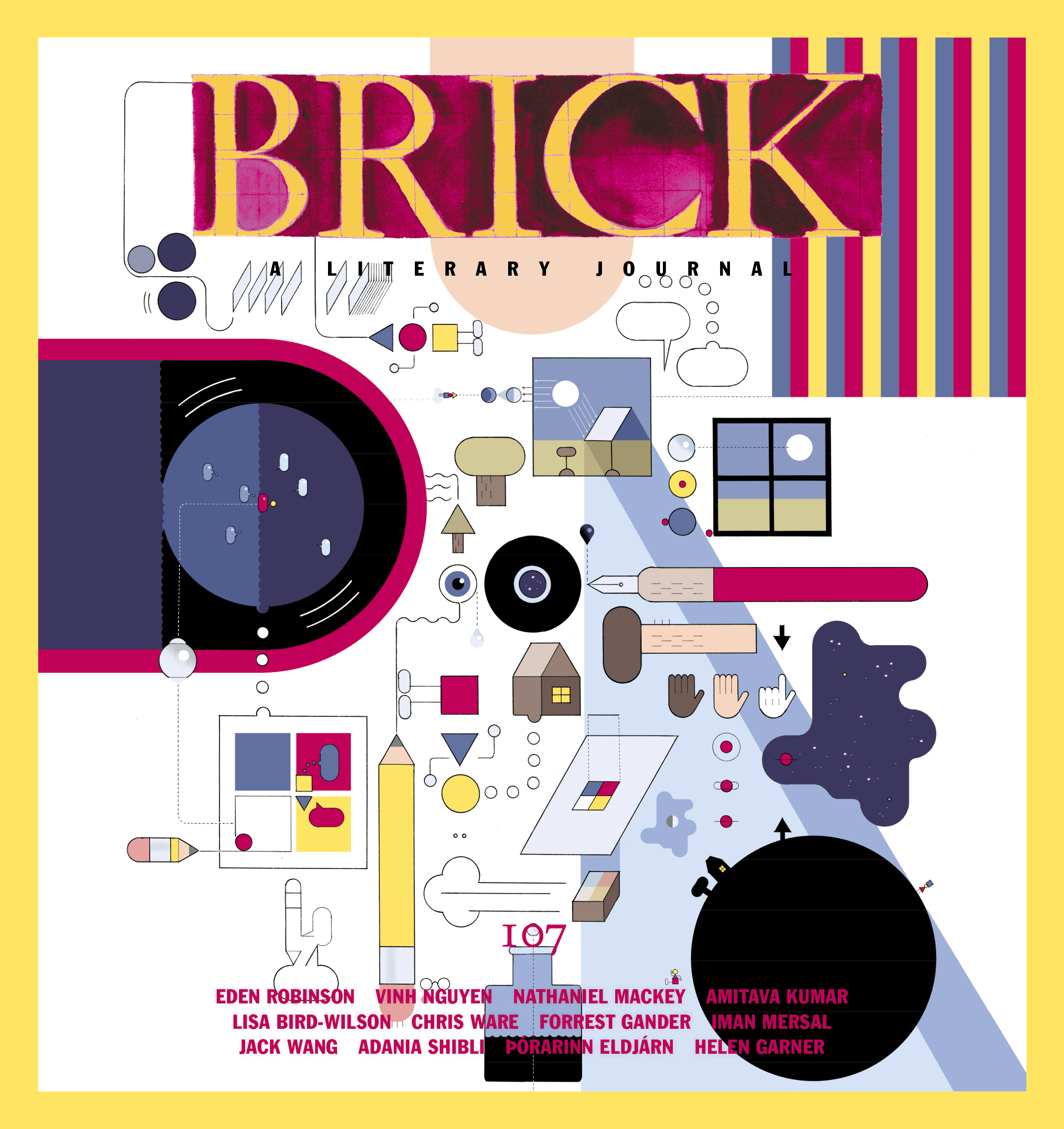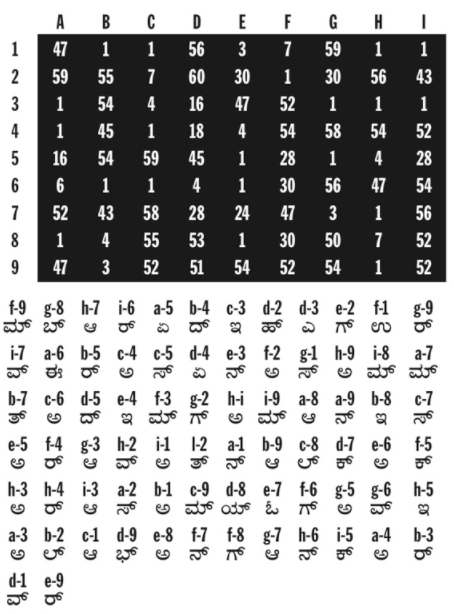For N. Manu Chakravarthy & Eliot Weinberger
Sometime during the first millennium in South India, a Jain monk named Kumudendu Muni composed on palm leaves what is, perhaps, the most radical and spectacular work of literature in any language.
The story has no precise beginning, but we might drop into the court of Rishabhanatha in Uttar Pradesh, India, around 800 C.E., during the same long dynasty that celebrated Buddha and Lord Rama. There, philosopher-poet Kumudendu watches his old king divide the kingdom between his two sons. Predictably, the siblings go to war with each other over territory. The younger son, Bahubali, wins but is so disgusted by the enmity that twisted his mind that he decides to hand over the whole kingdom to his brother and make himself a Digambara, a member of that sect of Jain monks who renounce ownership and wear no clothes. He becomes known as Gommata (and is memorialized in a fifty-seven-foot-high statue, constructed in 983 C.E. and long known as the “largest freestanding monolithic statue in the world,” on a famous hill in Karnataka).
Gommata’s older brother accepts the kingdom but feels contrite and, inspired by his brother’s renunciation, asks Gommata to teach him how to become wise. Here’s where the story gets interesting. Gommata remembers that after their kingly father bestowed his territories upon his two sons, he called for his two daughters to sit on his lap and hold out their palms.
In the Jain tradition, the giving of knowledge is more valuable than the giving of food, shelter, or money. It was to his daughters that the king bequeathed his most lasting gift. On the palm of one daughter, he drew the numbers zero and one. On the palm of the other, he drew the sixty-four letters of the Kannada alphabet. Between these numbers and these letters, he told them, you’ll have access to all the knowledge of the world.
Gommata follows his father’s example and gives to his brother a cipher for the wisdom he seeks. And Kumudendu, the court poet, closely watching all this drama, realizes that it might be a good idea to render the long philosophical poem he is writing into a code so that if the manuscript is destroyed, it might be reconstructed again and again.
So it comes about that Kumudendu writes and codes the Siri Bhoovalaya, a poem of some 600,000 verses—making it six times longer than the epic Mahabharata. Within its structure, there are reputed to be works in over seven hundred languages in at least eighteen scripts. The Siri Bhoovalaya was recognized in its time as a major literary work, and copies were made and distributed among the Jain sects. But over the centuries even these facsimiles gradually disappeared. Then, in the early 1950s, one handwritten copy on Kori paper was discovered by a man named Yellappa Shastri in a village near Bengaluru in Karnataka. The owner wouldn’t part with the book, so in order to win his confidence, Shastri married the owner’s niece. His strategy didn’t work. Shastri still didn’t get to actually hold the book in his hands until the owner died, and because Shastri was poor, he had to sell his wife’s bangles to buy it.
The Siri Bhoovalaya, like Lucretius’s On the Nature of Things or Parmenides’s influential On Nature, is a philosophical poem but contains sections on mathematics, chemistry, astronomy, medicine, and space travel. It also contains versions of the Bhagavadgita, the Rig Veda, the Upanishads, and other major texts. Kannada, the main language spoken by its author, has a literary history stretching back more than a thousand years. Among Kannada’s gems are the thirteenth-century The Life of Harishchandra by Raghavanka (recently translated into English for the Murty Classical Library); the ninth-century Kavirajamarga, a definitive book on Kannada grammar and poetics; and the tenth-century epic Vikramarjuna Vijaya by Pampa Bharatha, who was, like the author of the Siri Bhoovalaya, a Jain poet.
The multilingual poem can be rendered in the Saangathya metre of classical Kannada poetry. I say rendered instead of written because the work’s most unique feature is that it is composed of numerals, not words, arranged in crossword fashion as chakras or matrixes of 729 squares—27-by-27 integers—whose systemically coded patterns can be translated into phonemes and words. Sometimes the sentences are embedded across the entire chakra, but often the sentencing is organized into “magic squares” within the larger structure.
In 1953 and 1955, the first two volumes of research and translation into modern Kannada of the Siri Bhoovalaya appeared. In 1956, because the Kori paper was in bad condition, all the pages were microfilmed at the National Archives in New Delhi. More recently, two volumes of deciphered text and critical apparatus were published in Bengaluru and the first of those volumes was translated into Hindi so that more readers would know about it.
Some have already called the Siri Bhoovalaya our first microchip literature.
Such are the claims. How, you are wondering, do they pan out? With the help of Dr. S. V. Narasimhan in Karnataka and the Kannada literature scholar-sculptor Ashwini Bhat, I worked through the first sentence of an early chakra, 1-10-2, which looks like this:
This large chakra can be divided into 9-by-9 cells, or “magic squares,” in which each number corresponds to a Kannada phoneme. A cipher was published in the recent scholarly books, a system of well-defined steps (for instance, starting always with the middle number of the first line—3 here—and then following a strict sequence common to recreational mathematics) for linking phonemes into words and into sentences.
In this, the top-left cell of the large chakra, the deciphered sequence produces Kannada phonemes that construct the sentence: Aam baredihe guru Veeraseena sammathadim gamanise aravathnalkakshara samyoga // Vimala Bhangankaruvar . . . , which might be translated into English as I have written, with guru Veerasēna’s approval, this observation of the union of sixty-four letters . . . (There is no punctuation, and the last two words, the name Vimala Bhangankaruvar, are the subject of the next sentence.)
I can’t say whether the Siri Bhoovalaya contains everything its champions claim for it: hundreds of languages and hundreds of works of literature all compressed into a fantastically inventive numerical code. Yet even without empirical corroboration, isn’t human experience, with all that constitutes it, incomplete without the Siri Bhoovalaya? The poem says to us, Here is everything: from the past into the future. Take what you don’t already have—in whatever language you like—from this, the infinite cosmos of a poet’s imagination. Maybe the Siri Bhoovalaya needs no further authentication to be marvellously what it is.
Forrest Gander is an American poet, essayist, novelist, critic, and translator.


